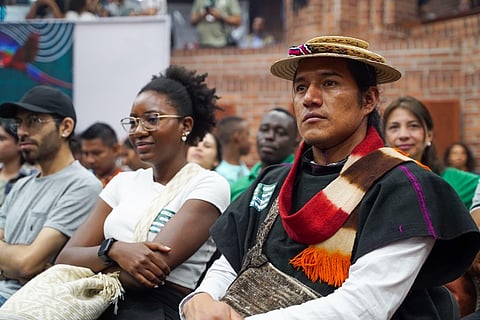

The 16th Conference of Parties (COP16) to the Convention on Biological Diversity (CBD) is set to begin in Cali, Colombia. The meeting, starting on October 21, is the first time the Parties are meeting since the Kunming-Montreal Global Biodiversity Framework (KMGBF) was adopted in 2022. The Framework has 23 Targets that need to be met by 2030 and four overarching goals to be met by 2050.
Among the many things on the agenda is the issue of sharing benefits earned from the use of digital sequence information (DSI) on genetic resources. Target 13 of the KMGBF aims to increase the sharing of benefits from genetic resources, digital sequence information and traditional knowledge. To meet this target, countries would need to put in place legal, policy, administrative and capacity-building measures.
Despite the two meetings of the Ad Hoc Open-ended Working Group on Benefit-sharing from the Use of DSI on Genetic Resources asked to finalise the plan to operationalise a multilateral mechanism and a global fund, the document is full of brackets. At COP16, Parties would need to finalise this document.
This is likely to be difficult as there is a clear difference in what developed and developing countries want. While developed countries want unrestricted access to the genetic material in return of voluntary contribution to the global fund, their developing counterparts want a system more in sync with the three principles of the CBD.
The Parties would also assess the progress made in all the targets. Unfortunately, not much has been achieved in the nearly two years that have passed since the adoption of the Framework. For example, only 100 parties have submitted national targets and 30 updated National Biodiversity Strategies and Action Plans. Without these, it is not very clear what Parties plan to do to meet the targets.
In case of Target 3, popularly known as the 30x30 target, the world is still far from meeting it. The area-based conservation target prescribes that at least 30 per cent of land, inland and coastal waters, and marine resources are conserved by 2030. With just 17.5 per cent of land and 8.4 per cent of oceans protected, the world is nowhere near meeting it. The numbers also belie the usefulness of these protected areas and studies suggest that they are not very effective in meeting the goal of conservation.
In case of Target 19, yet another ambitious target under which the developed countries are supposed to provide at least $20 billion each year by 2025. this has not happened on the ground. The ‘20 billion Tracker’ launched by a group of non-profits shows that by September 2024, publicly announced international biodiversity finance commitments amounted to about $8.2 billion, which represent 41 per cent of the 20 billion target These announcements were made between 2021 and 2025. At COP16, more announcements are likely to be in the works. But it remains to be clear if this target is going to be met or not.
Just before COP16, Parties met at the meeting of the fifth meeting of the Subsidiary Body on Implementation. The delegates approved two recommendations on national target setting and updating of national biodiversity strategies and action plans, and the pilot forum for voluntary country review with several outstanding issues.
COP16 is set to begin with an opening on October 20. The deliberations over the next two weeks will decide the fate of global biodiversity.